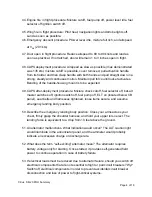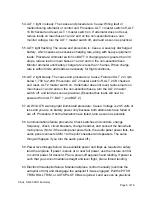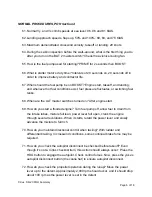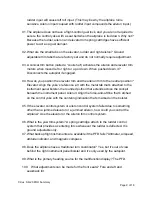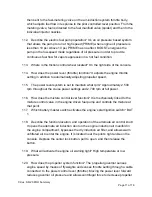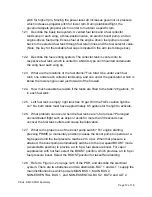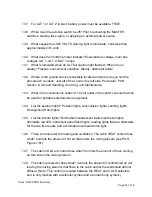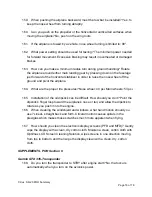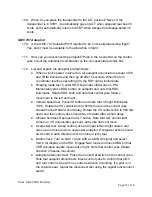
73.What is the rpm tolerance during the mag check? 175 rpm max drop and both
drops must be within 50 rpm of each other.
74.Is an idle check required before takeoff? It’s not on Cirrus’s checklist, but that’s
not good. At the conclusion of an engine runup, particularly with a fuel injected
engine, an idle check is mandatory.
75.What flap setting is used for short- and soft-field takeoffs? 50%
76.Should the mixture be leaned during climb? As required.
77.During cruise flight when and how do you lean for best power or best economy?
When at 75% power or less, use the MFD’s lean assist or manually lean to 100°
rich of peak EGT for best power or peak EGT for best economy.
78.When can you land with less than full flaps? Only when the flaps fail to deploy or
when it’s necessary to extend glide distance due to an engine malfunction.
79.What is the short-field approach speed and the restriction that applies to braking?
78 KIAS. Apply normal brake pressure and announce “simulating max braking”.
80.What is the crosswind landing technique? Use full flaps and avoid prolonged
slips.
81.If the ELT activates after a hard landing, how do you turn it off? Press the reset
button on the ELT control panel that’s located below the circuit breaker panel.
PERFORMANCE DATA, POH Section 5
82.When determining airplane performance, what should you do if the ambient
temperature is less than or greater than the chart value? Less than: Use the
lowest published temperature, which will result in a more conservative
performance calculation. More than: Use extreme caution as performance
degrades rapidly at higher temperatures.
83.Are performance figures always reliable? No. Range and endurance variations of
10% or more can occur due to variations in fuel metering, mixture leaning
technique, engine and propellor condition, and air turbulence.
Cirrus SR-20 POH Summary
Page 7 of 18




